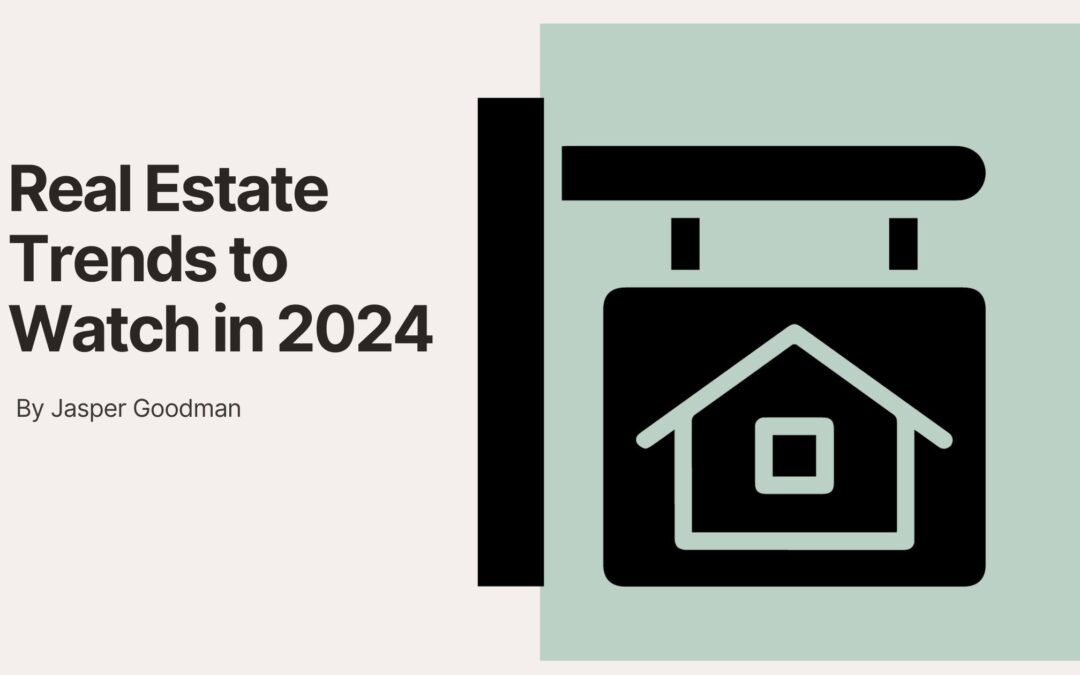The real estate market is ever-evolving, influenced by economic shifts, demographic changes, and technological advancements. As we move into 2024, understanding the key trends shaping real estate investment is crucial for both seasoned investors and newcomers looking to maximize their returns. Here are the top real estate investment trends to watch in 2024.
1. Growing Demand for Suburban and Rural Properties
One significant trend in 2024 is the continued interest in suburban and rural real estate. The pandemic accelerated the shift away from densely populated urban centers as more people embraced remote work. With many companies offering flexible work options, homebuyers and renters are seeking properties that offer more space, better affordability, and a higher quality of life.
Why It Matters: Suburban and rural areas often offer lower property prices and lower living costs compared to major urban centers, making them attractive to families and individuals looking for better value. This trend is driving up demand and creating investment opportunities in these markets.
2. The Rise of Sustainable and Green Homes
Sustainability is no longer just a trend; it’s becoming a necessity. Eco-friendly homes with energy-efficient features, solar panels, and sustainable building materials are highly sought after. As energy costs rise and environmental consciousness grows, properties that offer green features are in demand from both buyers and renters.
Key Considerations: Real estate investors should look for properties with built-in sustainable features or consider retrofitting existing properties to be more energy-efficient. Not only does this enhance the value of the property, but it can also attract eco-conscious buyers and tenants.

3. Technology Integration in Real Estate
Technology has been transforming the real estate industry for years, and 2024 is no exception. Advanced technologies such as virtual reality (VR), augmented reality (AR), and artificial intelligence (AI) are becoming more prevalent, enhancing the property viewing experience and helping investors make data-driven decisions.
Impact on Investments: Properties that integrate smart home features and are equipped with IoT (Internet of Things) technology are becoming more attractive. Additionally, investors can leverage AI-powered analytics tools for market insights and predictive modeling to stay ahead in the game.

4. Multifamily Properties and Rental Demand
The multifamily housing sector continues to show strong performance as demand for rental properties remains high. Rising home prices and mortgage rates have made it difficult for first-time buyers to enter the market, leading to a sustained interest in rental properties. Multifamily units are seen as a reliable investment choice due to their consistent cash flow and lower vacancy rates.
Top Locations: Urban areas with growing job markets and lower-than-average housing supply are prime locations for multifamily investments. Cities like Austin, Texas, and Raleigh, North Carolina, are seeing an influx of residents and have a strong rental demand.
5. The Short-Term Rental Market Boom
Short-term rental platforms like Airbnb and Vrbo have reshaped how people think about vacation and temporary housing. The short-term rental market continues to grow, especially in popular tourist destinations and high-demand urban neighborhoods. Investors who can navigate local regulations and optimize their property listings for short-term stays can see significant returns.
Tips for Success: Property owners should consider unique features that appeal to travelers, such as fully equipped kitchens, modern design, and excellent customer service. Always stay informed about local laws regarding short-term rentals to avoid potential fines.
6. Adaptive Reuse of Commercial Spaces
The shift to remote work has left many office buildings and commercial spaces underutilized. This has opened up opportunities for adaptive reuse, where these properties are transformed into residential units, mixed-use spaces, or community hubs. Adaptive reuse projects not only help revitalize neighborhoods but also address the shortage of housing in certain areas.
Investment Potential: Investors interested in adaptive reuse projects should consider properties with flexible zoning laws and areas where there is demand for urban living and mixed-use developments. These projects often require more capital upfront but can provide significant returns and help boost the local economy.
7. The Impact of Interest Rates on Real Estate
Interest rates have a significant impact on real estate investments, influencing both buyer behavior and investor strategies. With the Federal Reserve adjusting interest rates to combat inflation, higher mortgage rates may continue to impact home affordability and the overall housing market.
What This Means for Investors: Higher interest rates may lead to a slowdown in home purchases, which could result in longer selling times and increased negotiation power for buyers. Investors should focus on markets that are less affected by interest rate fluctuations or consider creative financing options such as seller financing or assumable loans.
8. Real Estate Crowdfunding and Fractional Ownership
Real estate crowdfunding platforms and fractional ownership models have made it easier for investors to pool their resources and invest in properties they might not have been able to afford individually. This trend is democratizing real estate investment and making it more accessible to a broader range of investors.
Why It’s Important: Crowdfunding and fractional ownership allow investors to diversify their portfolios without the need for substantial capital. This method also reduces the risks associated with investing in a single property and opens up opportunities in different property types and locations.
9. The Shift to Mixed-Use Developments
Mixed-use developments that combine residential, commercial, and recreational spaces are becoming more popular. These developments cater to the demand for convenience and community, especially among younger generations who prefer walkable neighborhoods with easy access to amenities.
Investment Insights: Look for opportunities in cities that are prioritizing mixed-use projects and urban development. Properties within these developments can attract premium rental rates and increased resale value due to their desirable location and built-in amenities.
10. Increased Focus on Community and Amenities
Today’s buyers and renters prioritize not just the property itself but also the surrounding community and amenities. From fitness centers and coworking spaces to pet-friendly areas and walking trails, having a well-rounded lifestyle offering is becoming an essential part of real estate investment.
What to Watch For: Ensure that properties or developments you’re considering have or plan to include attractive community features. Communities that provide convenience and a high quality of life can command higher rent prices and foster tenant retention.
Conclusion
As we head into 2024, the real estate market presents unique opportunities and challenges for investors. Whether it’s the demand for sustainable living spaces, the boom of short-term rentals, or the shift in office space usage, understanding these trends is key to making informed investment decisions. Stay proactive by conducting thorough market research, leveraging technology, and adapting to new regulations to make the most out of your real estate investments.

Hello welcome to my real estate service blog